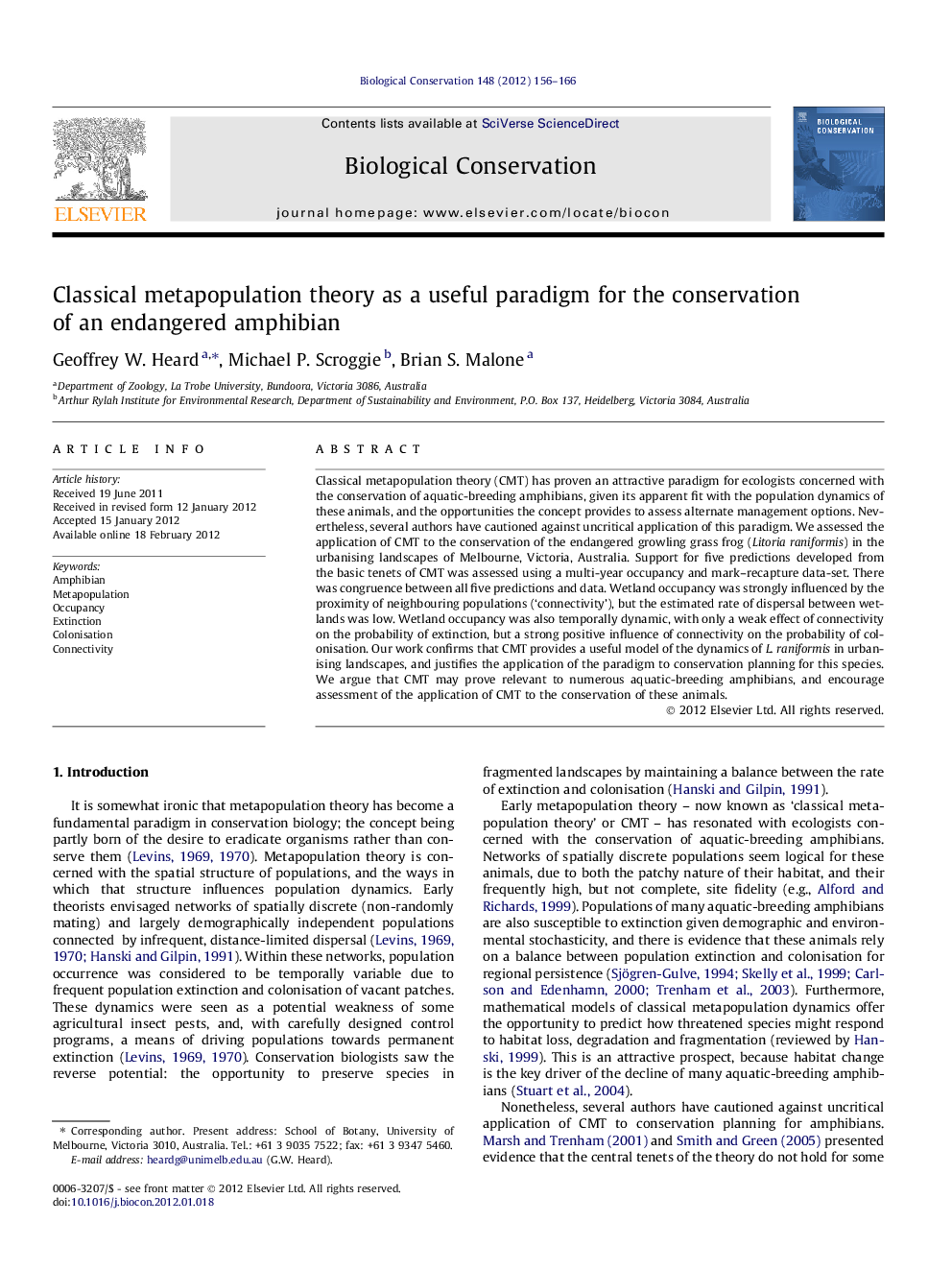| Article ID | Journal | Published Year | Pages | File Type |
|---|---|---|---|---|
| 4385504 | Biological Conservation | 2012 | 11 Pages |
Classical metapopulation theory (CMT) has proven an attractive paradigm for ecologists concerned with the conservation of aquatic-breeding amphibians, given its apparent fit with the population dynamics of these animals, and the opportunities the concept provides to assess alternate management options. Nevertheless, several authors have cautioned against uncritical application of this paradigm. We assessed the application of CMT to the conservation of the endangered growling grass frog (Litoria raniformis) in the urbanising landscapes of Melbourne, Victoria, Australia. Support for five predictions developed from the basic tenets of CMT was assessed using a multi-year occupancy and mark–recapture data-set. There was congruence between all five predictions and data. Wetland occupancy was strongly influenced by the proximity of neighbouring populations (‘connectivity’), but the estimated rate of dispersal between wetlands was low. Wetland occupancy was also temporally dynamic, with only a weak effect of connectivity on the probability of extinction, but a strong positive influence of connectivity on the probability of colonisation. Our work confirms that CMT provides a useful model of the dynamics of L. raniformis in urbanising landscapes, and justifies the application of the paradigm to conservation planning for this species. We argue that CMT may prove relevant to numerous aquatic-breeding amphibians, and encourage assessment of the application of CMT to the conservation of these animals.
► Classical metapopulation theory (CMT) may be applicable to amphibian conservation. ► We assessed the application of CMT to the growling grass frog from Australia. ► Occupancy and mark–recapture data confirm that the tenets of CMT hold for this frog. ► CMT is a useful paradigm for the conservation of this and other amphibians.
